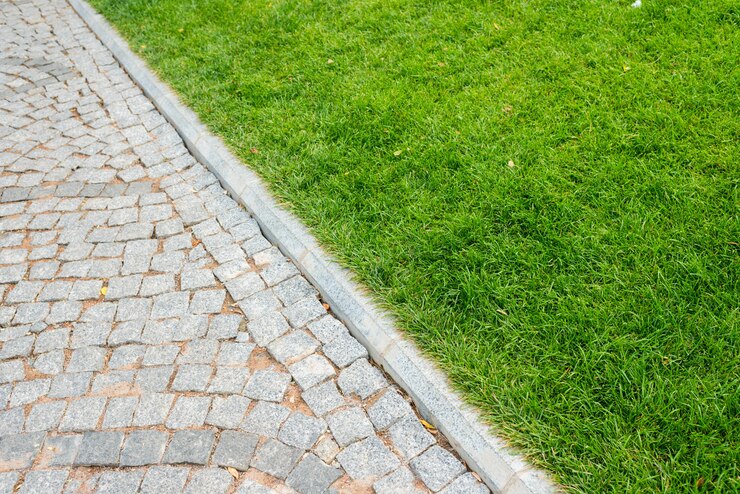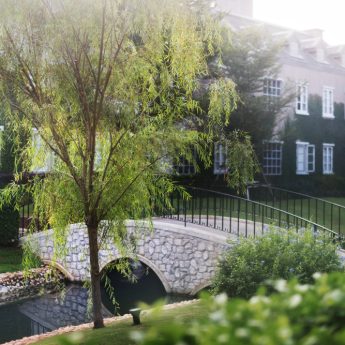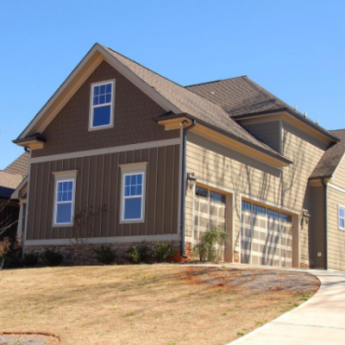Say Goodbye to Mud: The Ultimate Guide to Backyard Drainage Solutions

Indeed, you’ve likely noticed how a messy backyard looks at you when it heavily rains, and the backyard can’t drain out and gets stuck with rainwater.
Small ponds are created here and there, making it difficult for the kids and pets. The dangerous part is that the accumulated water goes underground slowly and starts to penetrate your building’s foundation, making it weak and risky for safety over time.
You can’t deny the necessity of a well-built drainage system for the backyard that works efficiently to evacuate the excess rainwater on time. Either you can make a single drainage system, or you can combine some of them efficiently.
However, this is not the typical DIY-type job; it requires an experienced professional who carefully works with the whole system and can keep it affordable for the average homeowner. And Reliabledp works while keeping all these things and handling your task carefully.
Top 9 Ways Of Draining Backyard Rainwater:
In this section, we will be discussing the top 6 best backyard drainage solutions that can help you in keeping your backyard clean, without any stagnant water.

1. Create a Drainage Plan
Before you go digging in the backyard, make a suitable drainage plan. Some backyards can clear most of the rainwater naturally, while some can hold partial amounts, which depends on the soil quality. Sometimes there can be a natural canal near the backyard, and typical drainage will be enough.
It’s better to use professional services for a good drainage plan as it might combine several methods to make it worthwhile.
And you have to consider the safety and comfort of your neighbors as well. Besides, if you have only the option of draining the rainwater out into the streets or storm sewer, you must check with authorities for related regulations.
2. Different Drainage Systems
You have various options for drainage systems to install in the backyard. Some of the standard techniques are:
- Dry Well
- French Drain
- Rain Garden
- Creek Bed
3. Create a Dry Well
A dry well is an excellent way to quickly extract water from the backyard. It’s a large, deep hole filled with gravel, which catches and holds the extra water until the ground completely soaks it. Instead of gravel, construction aggregates are also used as an absorber.
The water comes through the holes from the dry well’s sides and bottom. Usually, these dry wells are made of plastic that protects them from rotting quickly under the soil. You can increase the dry well size. One gravel can be enough for a small backyard; however, you can place several gravels side by side or stack them to increase the water capacity.
The dry well’s size should be fixed based on your backyard size. However, it should be spacious enough to hold the first 10 or 15 minutes of rain splash.
4. Install a French Drain
Sometimes the backyard might need a flexible, adjustable drainage system for the most problematic area. And a french drain can play that role well.
It takes out the water like a standard drain, but the main difference is that it’s a perforated pipe and runs under the soil. Sometimes, it can just be a trench under the ground level. However, the French drain’s tube is made of standard plastic covered and surrounded by gravel or similar kinds of stone and rock fragments that help to soak the water out of the drain.
A fabric layer works as a cover that prevents the gravel and soil from blocking the holes. In this way, the water comes out through the drain, gets distributed over a large area distant from the buildings, and keeps their foundations safe and solid from water penetration.
You can use the French drain system as a sole system or combine it with drywall. The advantage of using multiple drainage systems is that it serves greatly during continuous rain or after a heavy storm.
A French drain is easy to install and more affordable than other drainage systems. You can keep an outlet, yet a well-built French drain simply might not require a doorway. Gravels and soil can soak up the entire water flow through the perforated pipe. You can adjust the length according to the backyard premises.
5. Build a Rain Garden
Sometimes the backyard has uneven ground and low-height holes that hold rainwater and become muddy, making the appearance messy and ugly.
For some reason, the solution is easy if you consider creating a rain garden. There are plenty of water-loving plants like iris, canna, elephant’s ear, water hyssop, swamp sunflower, and more.
A rain garden not only solves the rainwater issue by absorbing it but also keeps the environment healthy. The plants absorb water-soluble chemicals and pet residues. However, choose the plants for your rain garden wisely, as they vary according to different soils.
The limitation of a rain garden is that it can’t hold or soak up all the excess rainwater. You can’t depend on it as a sole system in the backyard and need to use it as an additional support arrangement with other drainage methods. A rain garden can only hold the excess water until the primary drainage system can drain it.
6. Build a Creek Bed
A creek bed is an excellent drainage solution to remove the rainwater from your backyard. While you have to hide other drainage systems to keep the backyard looking clean and soothing, the creek bed makes the whole backyard view relaxing in both dry and rainy seasons.
The creek bed is simply a trench filled with various-sized boulders and stones. This helps channel the excess rainwater to an exit point or collection spot, which might be a dry well or rain garden.
A creek bed or arroyo is suitable when the backyard slopes to its edge. The process is quite simple. First, make a shallow channel with gently declining sides, and then put gravel on the sides and fill the middle with boulders and rocks. You can plant some ferns to add a more natural look.
7. Build Up A Low Spot
Low areas in your yard allow water to collect, resulting in saturated soil and possibly causing damage to your lawn or foundation.
You can improve drainage by filling in the low spot with topsoil or compost to create a slight incline that directs water flow away from the low area. If you’re adding soil, make sure you create a gradual slope that will allow water to drain away from the house and to a drainage point.
8. Try Creating A Swale
A swale is a very shallow, grass-lined channel that helps to capture and slowly release the rainwater. It can be a natural and attractive way to manage stormwater runoff. To create a swale, dig a shallow trench along a contour line in your yard.
The trench should be slightly deeper in the middle and have gently sloping sides. Plant native grasses or other water-loving plants in the swale to help stabilize the soil and absorb excess water.
9. Clean All The Gutters And Add Downspouts
Another backyard drainage solution is unclogging the gutter. Clogged gutters can’t let the rainwater drain, which can cause overflows that can damage your home’s foundation. Clean your gutters regularly to remove leaves, debris, and other obstructions.
Also, consider adding extensions to your downspouts so that water can be directed away from your foundation to a safe place, such as a swale, rain garden, or dry creek bed.
Why Is It Necessary To Improve Drainage?
There are several reasons you in to make improvement in backyard drainage solutions:
- Prevents Waterlogging and Flooding: Poor drainage can make the soil saturated, which leads to water pooling on the surface. This may cause plant damage, creating a muddy environment that sometimes flows into your home in the event of heavy rainfall.
- Protect Your Foundation: Excess water around your home’s foundation may exert undue pressure on the foundation, which could lead to cracks and eventual structural damage over time.
- Healthy Plant Growth: Most plants require well-drained soil for healthy growth. Bad drainage may cause the suffocation of roots, stunted growth, yellowing leaves, and, eventually, plant death.
- Prevent Erosion: The flow of water through your yard might cause erosion of soil, washing away the topsoil that is valuable and causing the formation of ugly gullies.
- Eliminate Mosquito Breeding Sites: Standing water becomes a perfect breeding site for mosquitoes, which are disease carriers.
- Increases Property Value: A well-drained yard is more attractive to possible buyers, thereby increasing the value of your property.
- Creates a More Enjoyable Outdoor Space: A dry and well-maintained yard is more pleasant to use for activities like gardening, playing, and relaxing.
By taking steps to improve drainage, you can protect your home, enhance your landscaping, and create a more enjoyable outdoor living space.
Facts That You Must Know: The Water-Loving Trees and Shrubs
Mother nature has always provided us with enough plants that can help us to soak up the water in our backyard. Here are some of the species that can possibly do the job as a backyard drainage solutions:
- Buttonbush (Cephalanthus occidentalis)
- Red or black chokeberry (Aronia spp.)
- Summersweet (Clethra alnifolia)
- Thornless honeysuckle (Gleditsia triacanthos var. inermis)
- River birch (Betula nigra)
- Red maple (Acer rubrum)
- Black tupelo, also called black gum (Nyssa sylvatica)
Final Verdicts
A well-built drainage system is a must to keep your house safe. Whether you are sure or not sure which drainage system will work best in your backyard, consult with a professional landscaper.
Additionals











Leave A Reply